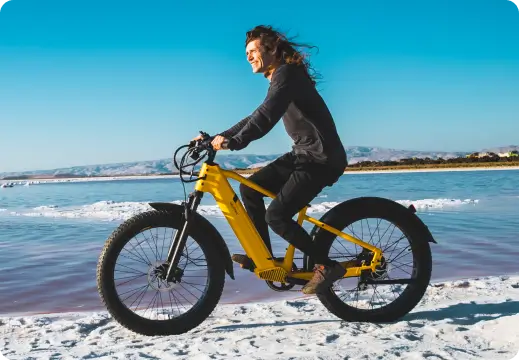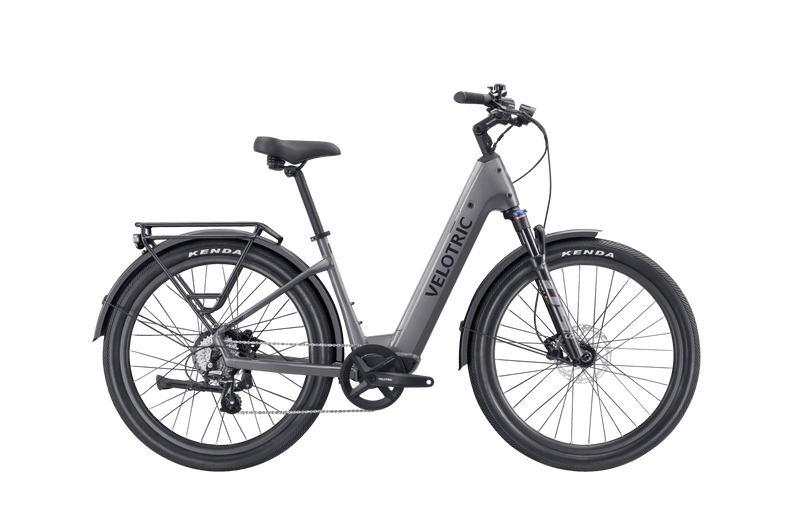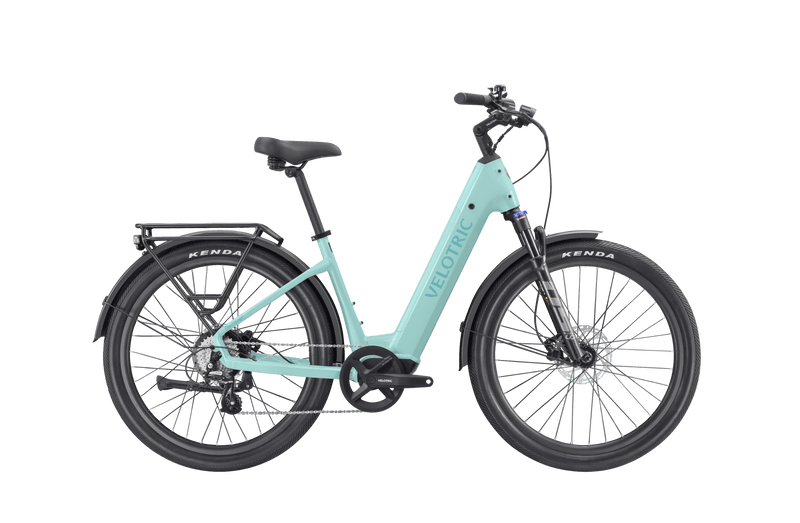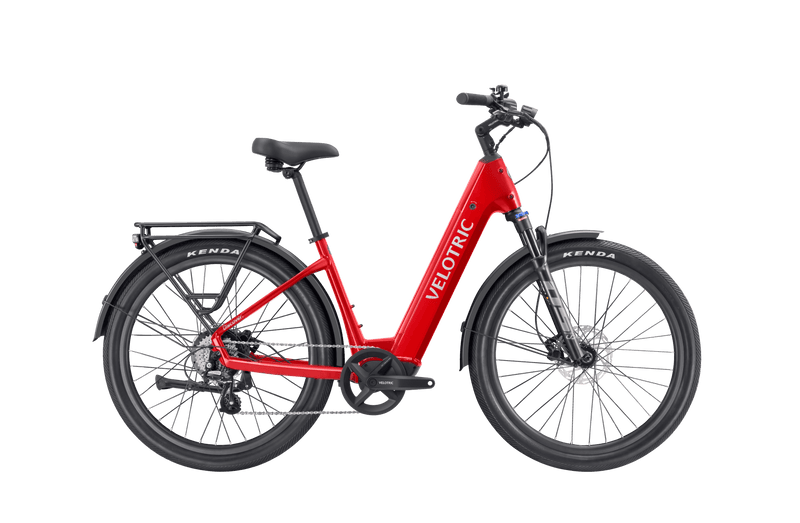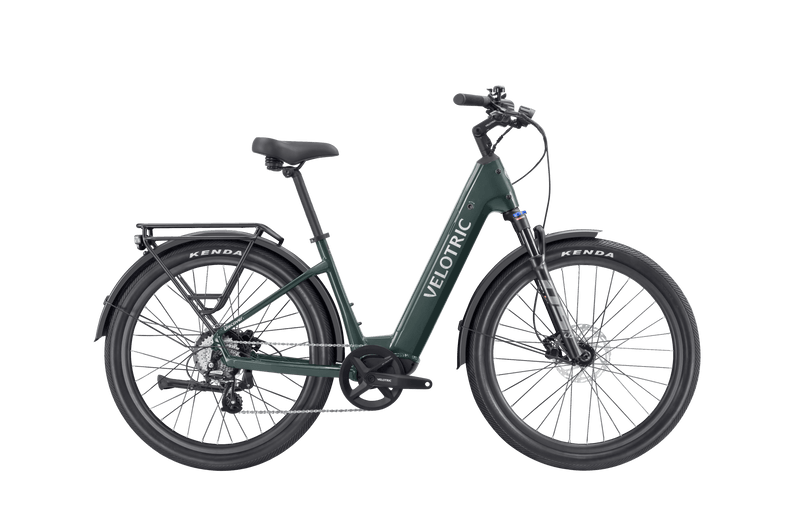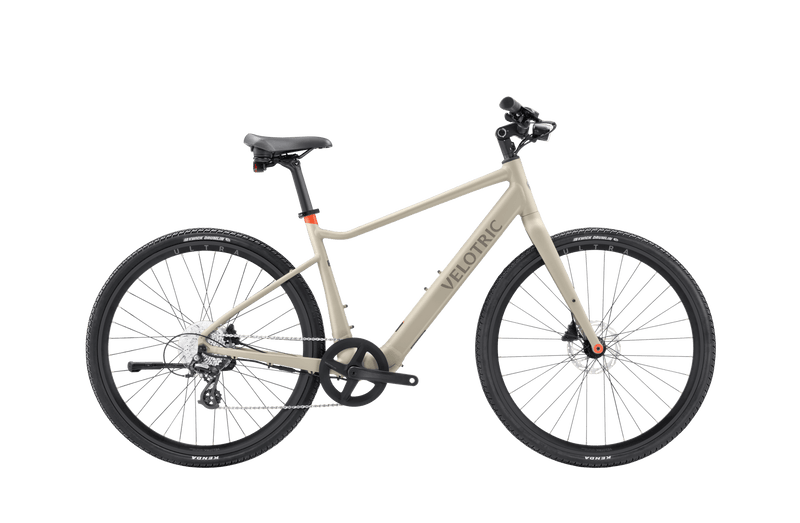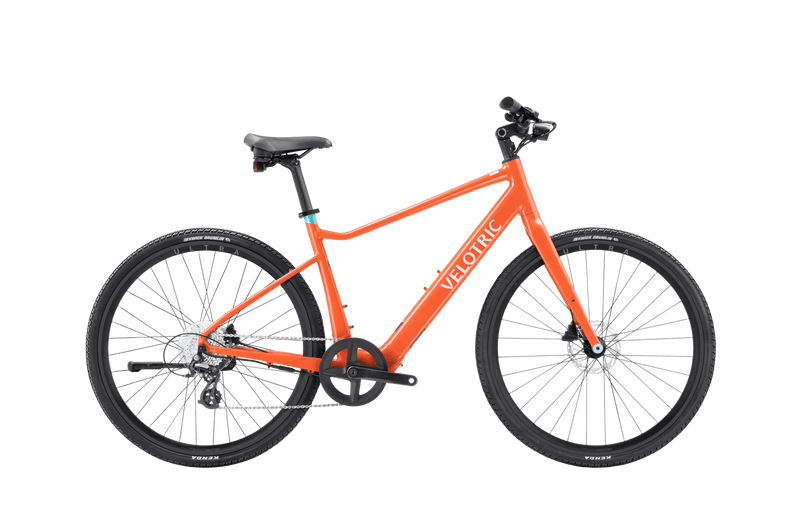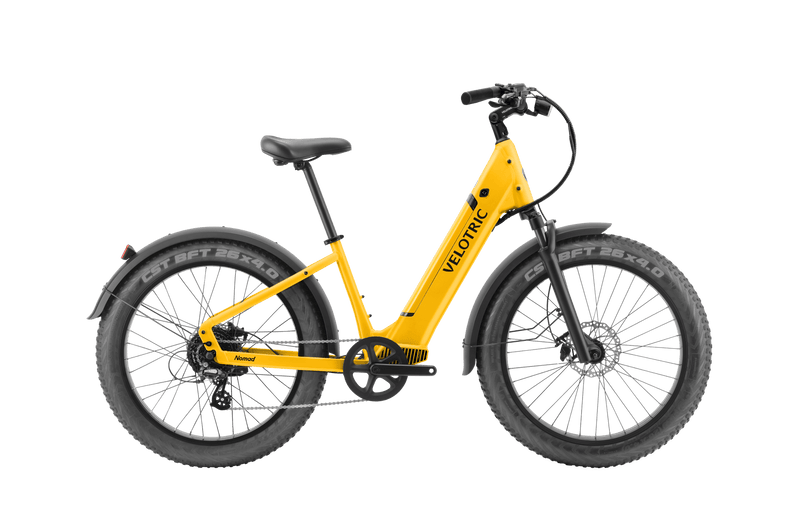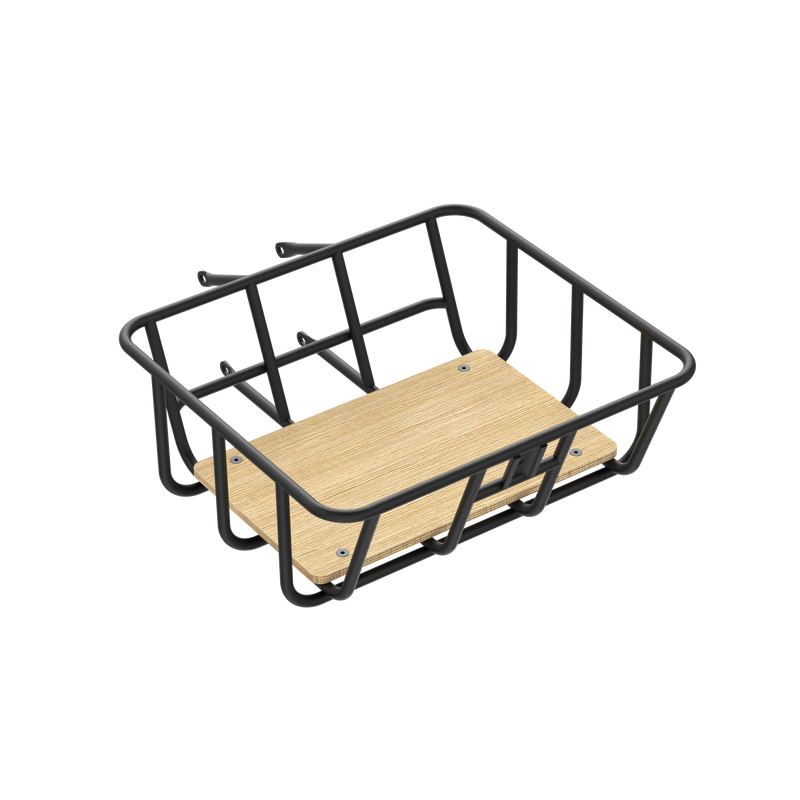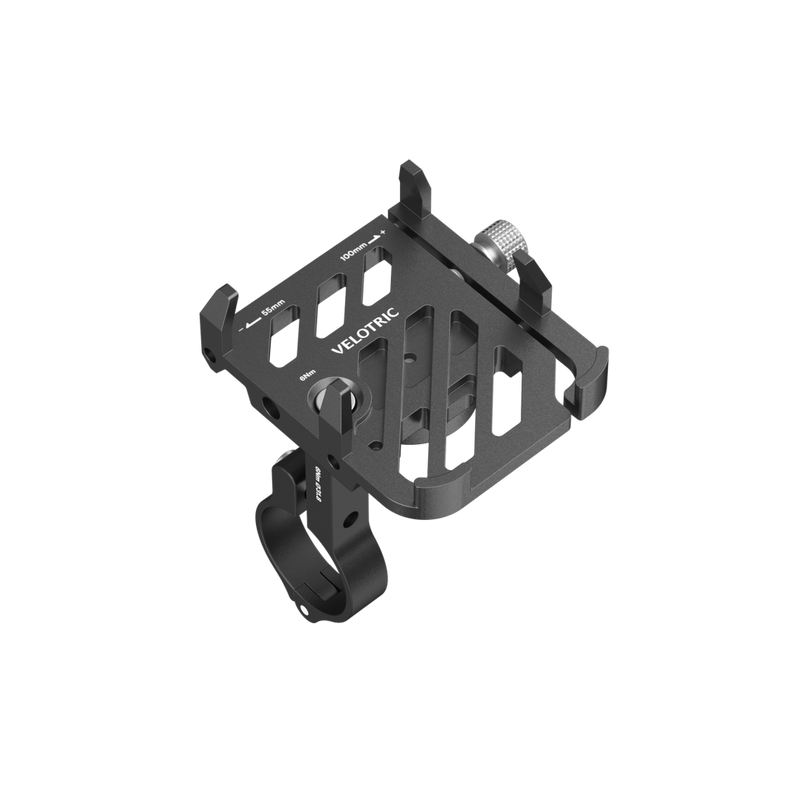Your electric bike’s gear system helps you adjust to different terrains, creating a more comfortable ride. For example, the gear you use for riding on a flat, paved road won’t be the same as climbing a treacherous hill. Different gears provide different assist levels, making for easier or harder pedaling.
Basic knowledge of the types of electric bicycle gears can help you better understand how your bike works and how best to use the gear system for a smoother riding experience.
Read on to learn about the different gear types and how to properly shift gears on an e-bike (hint: it’s slightly different from a traditional bike).
Types of electric bike gears
There are three main types of e-bike gears, each with its own mechanics. Here’s a quick overview for beginners.
Derailleur gears
Most e-bikes have derailleur gears. These are external gears in the center of the bike’s rear wheel. The rear derailleur connects to a cable. Depending on the tension in the cable, the derailleur guides the bike chain up and over the gear sprockets, moving between high gears and low gears.
The larger gears are the “lower” gears and are easier to pedal, making them ideal for hill climbing, while the smaller gears are the “higher” gears and better for flat surfaces.
When there’s less tension on the cable, the derailleur moves the chain downward and outward to a lower (smaller) gear. When there’s more tension on the cable, the derailleur moves the chain upward and inward to a higher (larger) gear.
Derailleur gear systems are lightweight and generally inexpensive to repair. They also tend to be more efficient than internal hub gear systems. Derailleurs provide a wider range of gearing options than standard hub gears, accommodating everything from steep climbs to downhill racing.
However, derailleur gears aren’t perfect. They can pick up dust and grime being exposed to the elements, causing them to get dirty and resulting in more difficult — and sometimes noisy — shifting.
Hub gears
Hub gears — or internal gear hubs (IGH) — are an alternative to derailleur gears. Unlike derailleur models, hub gears don’t display the full gear system. Instead, the gear system is in a hub on the bike’s rear wheel.
Hub gears also don’t rely on a chain and sprockets like derailleurs. Instead, they have a series of gears inside the hub: a sun gear, which is stationary, and multiple planet gears (usually three or four), which are held in a cage and revolve around the sun gears.
A larger annular gear encloses the sun and planet gears, while an external sprocket determines which gear is engaged.
Hub gears have a few distinct advantages. First, they’re low maintenance since they don’t have exposure to the elements like derailleur gears — and generally last longer, as the chain isn’t constantly moving between gear cogs. Hub gears are also compatible with belt drive e-bikes, while derailleurs are only compatible with chain drive e-bikes.
However, hub gears also have drawbacks. First, they tend to be more expensive and heavier. Additionally, if there’s an issue with the gearing system, you’ll likely need to consult a pro bike repair shop since the entire system is in the hub.
Hub gear systems also often have less range than a wide-range derailleur system.
Single-speed gears
We’ve discussed the mechanisms derailleur and hub gears use to shift, accommodating different terrain and riding styles. So, how does a single-speed e-bike shift gears?
Trick question: It doesn’t! Single-speed bikes only have one mechanical gear.
Single-speed bikes are suitable for flat-terrain riding. One benefit of single-speed bikes is that they’re low maintenance. They may also be practical for novice cyclists or children who don’t want to deal with the complexities of shifting gears — which is harder than it might seem.
Learn how it works in the next section.
How to shift gears on an electric bike
If you’re a newbie to cycling, it’s important to learn how to shift gears. Incorrect shifting can damage the gear system, reducing its life span.
Here’s a quick guide to help you master the basics.
1. Shift before you stop
Rule No. 1 about shifting gears on an e-bike: Never shift when standing still. You should be pedaling the bike when you shift — not stopping or using the throttle power assist (which powers the bike forward even when you aren’t pedaling).
Shifting when you aren’t pedaling can damage the gears. For example, this can cause the bike chain to dislodge and come off in a derailleur system.
Shifting before you stop also makes it easier to start up again later. You should be pedaling normally or with only pedal assist engaged before shifting.
2. Be careful when shifting gears while pedaling
While pedaling when shifting gears, you shouldn’t be going at maximum speeds. For example, the chainring could come off if you’re pedaling too hard when trying to shift with a derailleur model.
Before getting on your bike, make sure you know how to shift gears. Velotric’s Discover 1 and Nomad 1 bikes have rear derailleur systems and a thumb-controlled gear shifting switch at the handlebars.
3. Shift one gear at a time
Only shift one gear at a time to avoid potential damage to the e-bike gear system. Aggressive gear changes can cause the chain to skip or derail.
It’s also good to know your bike’s gearing capacity. For example, Velotric’s Discover 1 has a seven-speed gear system, while the Nomad 1 has an eight-speed gear system.
4. Use the right gear for the terrain
Finally, know what gears work for what terrain:
- Lower, easier gears are better for inclines — switch to a lower gear when approaching a hill.
- Middle gears are great for everyday cruising and terrains with slight ups and downs.
- Higher gears are ideal for accelerating, descending inclines, and riding on flat surfaces.
Electric bike gear maintenance
Well-functioning bike gears are important for a comfortable, smooth ride. You can help keep gears in good working order with the right maintenance.
Here are some basic steps for caring for bike gears.
Clean and lubricate gears
Use a clean, lint-free cloth and mild detergent to clean the drivetrain, including the gears. Dry the parts thoroughly afterward to reduce the risk of rust.
You should also lubricate the bike chain. Do this once every month.
Adjust gears
When you first get your e-bike, the gears may shift and adjust slightly. After you’ve ridden about 1,000 kilometers (about 620 miles), have a professional inspect and adjust the drivetrain as needed.
Replace worn or damaged gears
Gears are subject to wear and tear over time. You should replace broken gears immediately to ensure you can fully use the bike’s gearing capacity.
Generally, you should replace gears every 1,000 miles of riding. A pro bike shop can help.
E-bike gear FAQs
We’ve got answers to some of the most frequently asked questions regarding e-bike gear systems.
What is the best gear ratio for an e-bike?
A 300% gear ratio is considered average for an e-bike and suitable for a wide range of terrains. Gear ratio — or gear range — refers to the difference between the lowest and highest gear and is usually given as a percentage.
A gear ratio of over 500% is high, while 200% or less is on the lower end.
What is the purpose of gears on an electric bike?
Electric bike gears help cyclists adapt to different terrains and riding styles. Higher gears are better for descending inclines and flat surface riding, while you should downshift to lower gears for climbing hills.
Middle gears are for everyday cruising and terrains with slight undulations.
Discover the best Velotric electric bike for you
An e-bike gearing system directly impacts the range of terrain you can comfortably ride on, so it’s worth considering.
Velotric’s Discover 1 bike has a Shimano seven-speed rear derailleur system, while the Nomad 1 has a Shimano eight-speed rear derailleur system. You can use a thumb-controlled gear shifter.
Beyond a high-quality gearing system, Velotric bikes have other features to enhance your ride. Our bikes come with high-quality lithium-ion batteries that charge in six hours and are certified by Underwriters Laboratories (UL2271) — a global safety standards organization.
Velotric bikes also come in different sizes and styles to accommodate different needs. While the Discover 1 is good for everyday cruising, the Nomad 1 is a fat-tire e-bike that you can take on tougher terrain.
The Discover 1 and Nomad 1 come in two frame models: high-step or step-through (learn the difference).
The best way to find the right bike for you is to take it on a test run. Find a local Velotric dealer and schedule a test ride today.

































